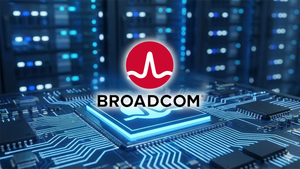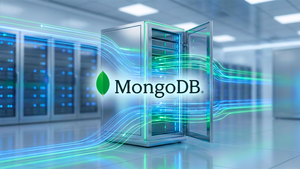The Edge Computing Market size is expected to grow at a Compound Annual Growth Rate (CAGR) of 19.0% during the forecast period, to reach USD 87.3 billion by 2026 from USD 36.5 billion in 2021. Growing adoption of IoT across industries, exponentially increasing data volumes and network traffic and rising demand for low-latency processing and real-time, automated decision-making solutions are the drivers of the market growth.
Adoption of the edge computing software can dramatically improve performance by achieving the next level of security, such as edge-based threat detection, data minimization, and decentralized infrastructure
The edge computing software includes edge computing platforms and operating systems that enhance the computing capabilities of edge devices and data centers within the network infrastructure. These platforms control hardware functions, support the collection of data from assets, assist in condition monitoring of remotely located assets, and help establish a network connection between edge devices and computing resources. The edge computing platform also helps debug and test data flows on remote data. The edge computing software can dramatically improve performance by achieving the next level of security, such as edge-based threat detection, data minimization, and decentralized infrastructure.
Download PDF Brochure: https://www.marketsandmarkets.com/pdfdownloadNew.asp?id=133384090
Industrial IoT combines real-time processing, hardware optimization capabilities, and ubiquitous connectivity for IoT systems to maximize the efficiency of machines and the throughput of the entire process.
Edge computing is one of the core components of the industrial internet of things. It plays an important role in accelerating the journey towards industry 4.0 adoption. For a device deployed in an IIoT environment, an edge computing platform must be integrated with different resources from the data center to the cloud. IIoT represents a wide variety of IoT applications in the industrial sector, including smart robotics, remote diagnosis, asset optimization, connected manufacturing and product integration, and smart construction. Industrial IoT combines real-time processing, hardware optimization capabilities, and ubiquitous connectivity for IoT systems to maximize the efficiency of machines and the throughput of the entire process. Smart robotics, remote diagnosis, asset optimization, connected product integration, and smart construction applications will drive edge computing adoption in various industries as it combines real-time processing, hardware optimization capabilities, and ubiquitous connectivity for IoT systems to maximize the efficiency of machines and the throughput of the entire process. By infusing edge computing in IIoT processes, companies could achieve improved network communication and cooperative coordination with the cloud connected to the system. Thus, the proliferation of IIoT devices makes the introduction of edge computing functionalities easier to be deployed at end-user locations as these devices are equipped with processing units that can support edge technology.
The major players have implemented various growth strategies to expand their global presence and increase their market shares. Key players such as Cisco, HPE, Huawei, IBM, Dell and Nokia have majorly adopted many growth strategies, such as new product launches, acquisitions, and partnerships, to expand their product portfolios and grow further in the edge computing market.
Cisco has a strong product portfolio in the edge services category. The company has a strong partner network with offices across 450 locations across the globe. It holds a strong position in the edge computing market. The company is investing in R&D for growth and innovation. The company has a strong geographic presence and offering edge computing deployments in emerging markets such as India, China, and Brazil. The company’s strategy is to excel in the global market through strategic acquisitions and partnerships. For instance, Cisco and Schneider Electric partnered to deliver an edge computing solution. Schneider Electric integrated Ciscos new edge computing solution, HyperFlex Edge, within its 6U Wall Mount EcoStruxure Micro Data Center. Schneider Electrics 6U Wall Mount is designed for edge computing environments where space is at a premium and reliability is a must.
Request a Sample Pages: https://www.marketsandmarkets.com/requestsampleNew.asp?id=133384090
HPE has a strong global presence, brand name, and recognition in the edge computing market. It has a diversified product portfolio with customized solutions. HPE has a strong distribution network and partner ecosystem, which is expanding its business in emerging markets. It has a strong track record of innovating products and automation of activities to deliver high quality products. The company is highly focusing on acquisitions and partnerships to accelerate innovation through hybrid cloud solutions. For instance, the company announced the acquisition of Determined AI to utilize Determined AI innovative open-source AI training platform with its high-performance computing solutions to enable ML engineers to speed up the AI production time.
Media Contact
Company Name: MarketsandMarkets
Contact Person: Mr. Aashish Mehra
Email: Send Email
Phone: 18886006441
Address:630 Dundee Road Suite 430
City: Northbrook
State: IL 60062
Country: United States
Website: https://www.marketsandmarkets.com/Market-Reports/edge-computing-market-133384090.html






